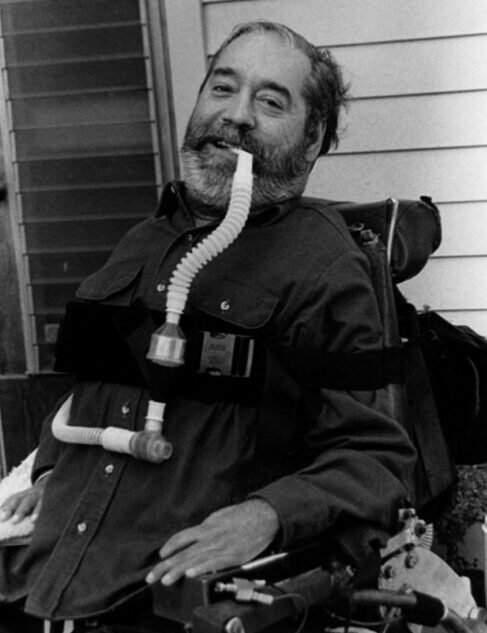In all of our literature, The IMAGE Center identifies itself as a Center for Independent Living (CIL). We are one of many such centers around the country – all guided by a philosophy known as the “independent living movement.” Ed Roberts is often considered “the father of independent living,” and Congress appointed January 23 as a day to celebrate him. So, since we in a way owe our very existence to the movement he pioneered, we thought it only fitting that we honor him with a special celebration of Ed Roberts Day in this week’s blog post.
Who Was Ed Roberts?
First and always, Ed Roberts was an advocate. He was the first wheelchair user to attend the University of California at Berkeley, and he had to fight for nearly every accommodation he received. Before that, he contracted polio at age 14, causing him to be paralyzed from the neck down and often sleep in an iron lung. His advocacy began early when he almost wasn’t allowed to graduate from high school because he had not completed the driver’s education and physical education requirements. His advocacy eventually paid off, however, and he went on to become the first wheelchair user to attend the University of California at Berkeley. As he sought admission to Berkeley, a dean there famously commented, “We’ve tried cripples before, and it didn’t work.” But Roberts had long before stopped thinking of himself as a “helpless cripple”; in his own words, he thought of himself as a “star.”
This attitude got him through his time at Berkeley, where he fought for everything from housing to mobility. When his search for a place to live on campus met with resistance, he was offered a place to stay in the hospital building, which he accepted on the condition that it be treated as a dorm, not a medical facility. As more students with disabilities were admitted, they stayed in the newly-created Cowell Residence Program, calling themselves the “Rolling Quads” – the first time many of their nondisabled peers had heard a positive identity of disability. Later, he and his fellow “rolling quads” advocated for curb cuts on campus and what became the model for college disability services. In the end, Roberts graduated with Bachelor’s and Master’s degrees in Political Science from UC Berkeley in 1964 and 1966 respectively.
Soon after Roberts’s professional career began, some of his colleagues in Berkeley founded the Berkey Center for Independent Living (CIL), which gives the IMAGE Center its model. Roberts soon returned to Berkeley to take over the CIL, and it became a pioneering force in the disability rights movement under his leadership. From 1976 to 1983 he served as director of the California Department of Vocational Rehabilitation – the same agency that had earlier fought his admission to Berkeley because they thought he was too disabled to get a job. Perhaps most famously, Roberts participated in the 504 Sit-in in San Fransisco, a large-scale demonstration in which disability rights activists occupied a federal office building for 28 days to push for regulations enacting Section 504 of the Rehabilitation Act, which guarantees accessibility in programs receiving public funding. Eventually, the regulations drafted as a result of this advocacy led to the Americans with Disabilities Act of 1990.
Why Does Ed Roberts Still Matter?
Ed Roberts died in 1995, but his legacy lives on in the lives of all people with disabilities. If you benefit from any of the accommodations guaranteed under the law, you have Ed Roberts and the pioneering work he did to thank. If you’ve succeeded in college as a person with a disability, he was there first. And everyone involved in this blog, reader and writer alike, has Ed Roberts to thank because if it weren’t for him, this Center for Independent Living wouldn’t exist. So, happy Ed Roberts Day, and let’s follow his example and live like stars!

